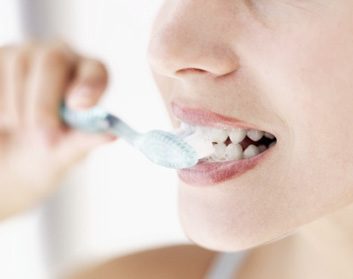
Drugstore oral care options
Why should you pay for a whitening system, you might wonder, when there’s a range of toothpastes, brushes and mouth rinses that claim to whiten? Many of these products contain a bleaching ingredient, and they do have some effect, acting mainly as abrasives, to scrub away surface stains.
Brushes: Philips Sonicare DiamondClean ($230); Rexall Power Whitening ($8); Reach Total Care + Whitening ($5); Oral-B 3D Advanced Vivid ($9).
Mouthwashes: Listerine Whitening Restoring Fluoride Rinse ($9; 473 mL); Scope White ($6; 170 mL)
Toothpastes: Colgate Optic White ($6, 165 mL); Sensodyne Brilliant Whitening ($6, 100 mL)
Floss: Reach Total Care + Whitening ($5, 27.4 m)
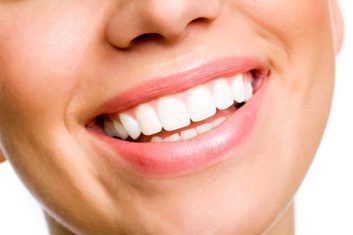
Whitening strips
Whitening strips have been widely available for a dozen years, but the materials and adhesives have been modified to stay in better contact with your teeth. That means more consistent whitening. “We revolutionized this technology to have minimum impact on the activities of the person’s day,” says Veronica Sanchez, global oral care scientific communications manager for Procter & Gamble, makers of Crest Whitestrips. She points out that this improved contact enables you to talk more clearly and even sip water while wearing the strips.
The bright side: Teeth-whitening strips come in varying strengths (look for words on the package like “gentle” and “intensive”).
The caveat: Depending on the variant, they can require a time commitment ranging from five minutes to one or two hours a day for a week or longer. They can cause irritation if they come in contact with gums. If users experience sensitivity, they may be forced to abandon the effort.
Examples: Crest 3D White Whitestrips ($70); Life Brand Advanced Whitening Wraps ($37)
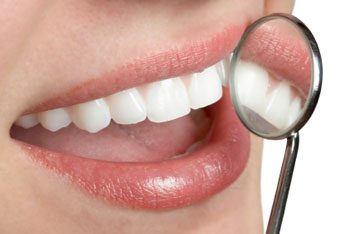
Trays with gels
Some come as prefilled trays; in others, you add the gel yourself. Trays are a flexible material and may be mouldable to your teeth.
The bright side: The kits are a less expensive alternative to custom-fit systems from the dentist’s office.
The caveat: Like strips, trays require a time commitment, whether that’s half an hour a day or overnight for one or two weeks; as well, for some people they may cause too much teeth sensitivity to bear before treatment is finished. Activities like eating and drinking are restricted while the trays are in your mouth.
Examples: Rembrandt Deeply White 2 Hour Whitening Kit ($27); Aquafresh White Trays ($35)

Paint-ons
Paint-on whiteners come in tubes, ampoules or pens. You apply the gel directly to your teeth using an applicator or brush, and it stays there until it dissolves.
The bright side: They are inexpensive (about $25) and portable, and you can treat just one tooth.
The caveat: The results may not be comparable to those from strips and trays.
Examples: Go Smile On the Go Teeth Whitening Pen; Everyday Glo Teeth Whitening Maintenance

In-office treatments
A dentist or dental hygienist applies whitening gel to your teeth with a much higher hydrogen peroxide content than what is used in at-home products. Some use UV or, more recently, LED light to speed up the action of the gel. This is sometimes called laser teeth whitening, although evidence is mixed on whether or not the light actually makes teeth whiter, according to the American Dental Association.
The bright side: An in-office treatment is all done in one or two hours.
The caveat: It’s expensive (up to $1,000), and requires a trip to the dental office.
Examples: Philips Zoom; BriteSmile
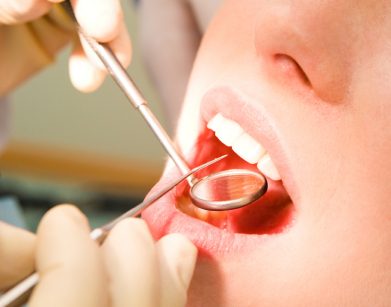
Customized take-home tray systems
A dentist uses an impression of your teeth to make a plaster model, which in turn is used to make plastic whitening trays that hug your teeth without covering the gum tissue. You’re given syringes or packets of whitening gel to take home and fill the trays. Formulas are now available for nighttime as well as daytime use.
The bright side: You can whiten at home. Customized trays also mean optimum contact with your teeth and may feel less bulky than drugstore kits.
The caveat: As with drugstore trays, they take time to work, and you can’t eat or drink while wearing them. The cost is $200-400 for the fitting, trays and gel.
Examples: Philips Zoom NiteWhite; Philips Zoom DayWhite
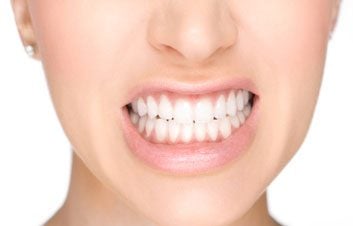
Home-use devices
Go Smile and Luster use light in combination with whitening gel. A new product called Tanda Pearl, introduced in 2012, uses ionization instead of light to release oxygen molecules faster from the whitening formula. “The ionic technology pushes the free oxygen molecule into the enamel of your teeth,” says Rose Mastnak, marketing director at Syneron Beauty Inc., maker of Tanda products.
The bright side: In the case of Tanda Pearl, the time commitment is short (two five-minute treatments a day for five days). You’re less likely to experience sensitivity, thanks to a lower concentration of peroxide in the gel that comes with the kit. Devices are reusable (you buy replacement gel for maintenance).
The caveat: It can be expensive, and the technology is still new.
Examples: Go Smile Whitening Light System; Luster Premium White; Tanda Pearl
Related:
• 4 foods that are bad for your teeth
• 7 things to know before you whiten your teeth
• 5 ways green tea is good for your oral health
